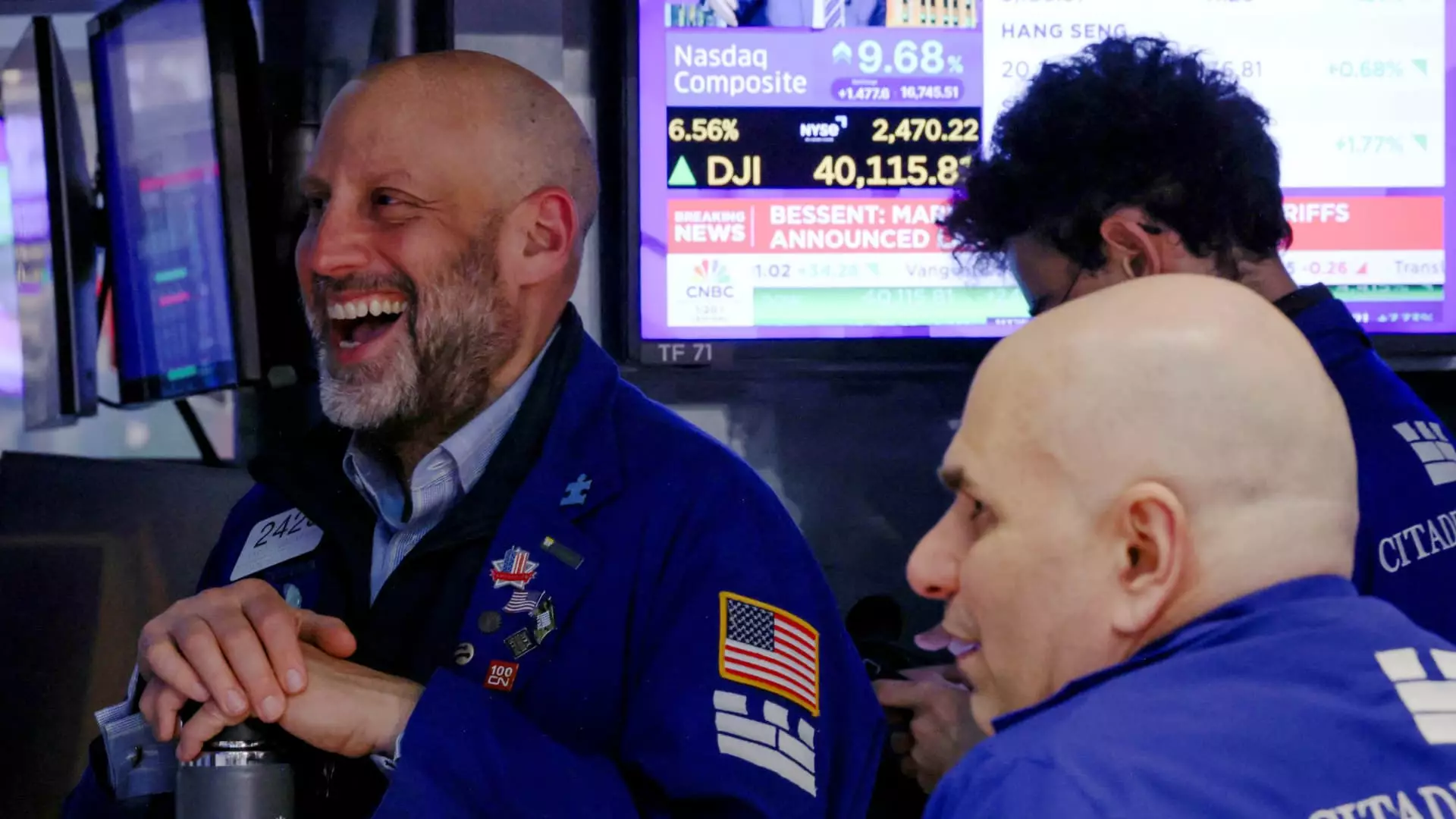In an unexpected twist, the stock market experienced an electrifying surge this past Wednesday, seemingly fueled by President Donald Trump’s announcement of a 90-day pause on reciprocal tariffs—a move dictated more by political strategy than economic necessity. The Dow Jones shot up by a staggering 3,028 points, marking an 8% rise, the largest single-day increase since 2020. The euphoria was infectious, with the Nasdaq and S&P 500 also recording monumental gains. Yet amidst this burst of optimism, the underlying economic realities raise crucial questions about the sustainability of such a rebound.
Understanding the Context
It is essential to dissect why this market rally occurred amid a backdrop of mounting anxieties. Just days prior to this announcement, stock valuations had plummeted due to escalating trade tensions between the U.S. and China. Assigning blame to tariffs, the market saw its worst downturn in recent memory, with losses that echoed those observed during the pandemic: a catastrophic drop of over 4,500 points in merely four days. This new pause comes as the market was hunched over, grappling with anxiety-induced pessimism. Could this latest fluctuation be merely a relief rally, a temporary respite in an incessant storm?
The Tariff Quandary
While the announcement of a reduced baseline tariff of 10% for all nations except China may seem like a favorable turn, the realities of international trade relations are complicated. The reintroduction of a whacking 125% tariff on Chinese goods—an unfathomable escalation—overshadows the so-called truce. Trump’s decision to label this a “pause” feels like a precarious move that merely postpones the inevitable reckoning. As Treasury Secretary Scott Bessent noted, this truce will not apply to all sectors, hinting at continued volatility in specific industries that are especially sensitive to trade disruptions.
What should investors take from these mixed signals? While the market seems to be celebrating the reprieve, corporate America could still face considerable headwinds with existing tariffs looming large over decisions made in boardrooms across the country. This “pause” may be slick rhetoric, concealing the deeper fissures in international commerce that cannot be wished away with a headline.
Market Reaction and Investor Psychology
This irrational exuberance carries with it a certain thrill but is laced with apprehension. Adam Crisafulli, founder of Vital Knowledge, summarized the sentiment aptly, stating that this pause has ignited a “violent rebound,” but warned investors not to become complacent, suggesting many still harbor fears of what comes next. The Bloomberg Echo chambers of optimism can often drown out caution, leading to risky, short-term decisions that ultimately sideline fundamental values and undermine responsible investment strategies.
Trump’s tweet, branding it “a great time to buy,” only serves to spotlight the recency effect gripping investors—an impulsive rush that neglects the eroded fundamentals. Sam Stovall of CFRA Research echoed these sentiments succinctly: “Fool me once shame on you; fool me five times, shame on me.” Emotional volatility in stock markets can give way to investor paralysis following exhilarating gains fueled by reckless optimism driven by executive whims.
A Cautionary Tale for Investors
As the market appears to revel in this short-lived euphoria, it is prudent for investors to exercise discernment. The pervasive sentiment that this rally signifies a definitive turnaround could prove dangerously misleading if the conditions that spurred the declines—namely tariffs, trade tensions, and political unpredictability—remain unresolved. The past weeks have illustrated just how swiftly fortune can swing in the stock market, and while enthusiasm is often contagious, a dose of skepticism might be the most sensible approach for the discerning investor.
The optimism sparked by Trump’s announcement’s headlines risks downplaying the complex realities in play. The market’s response may reflect more than just the mechanics of buying and selling; it showcases behavioral economics at its finest, with fear and greed orchestrating a dance that investors need to manage carefully. Moving forward, stock market participants must navigate the choppy waters of investor psychology while adeptly examining the shifting tides of policy that threaten sustained growth.

